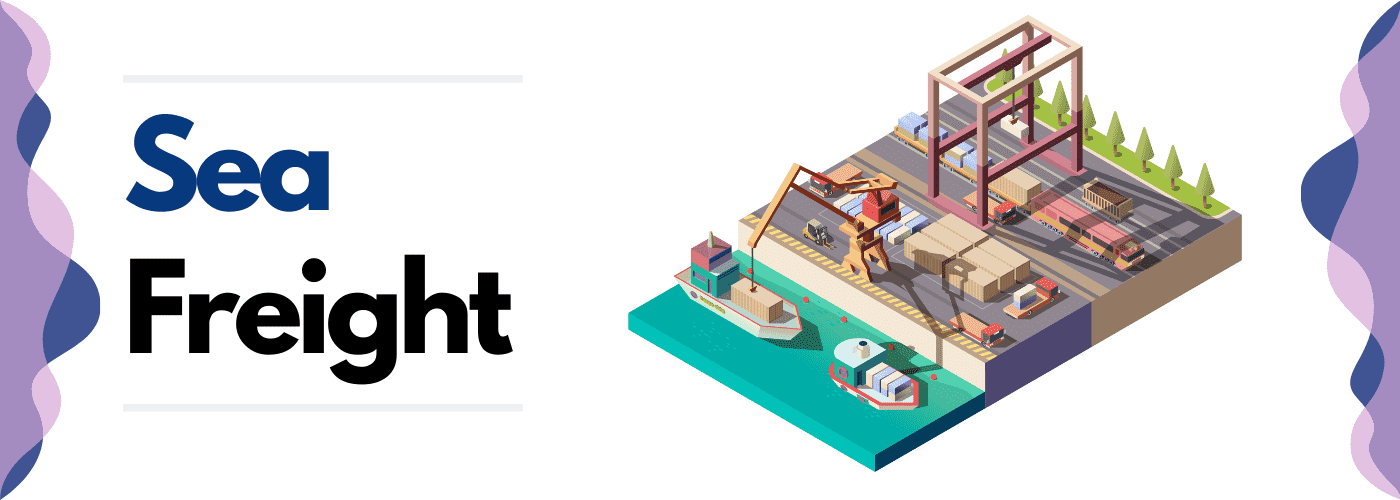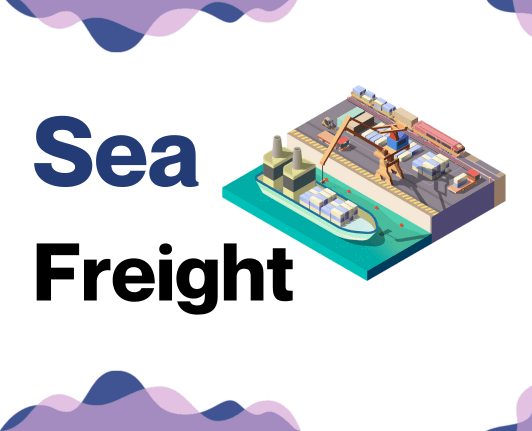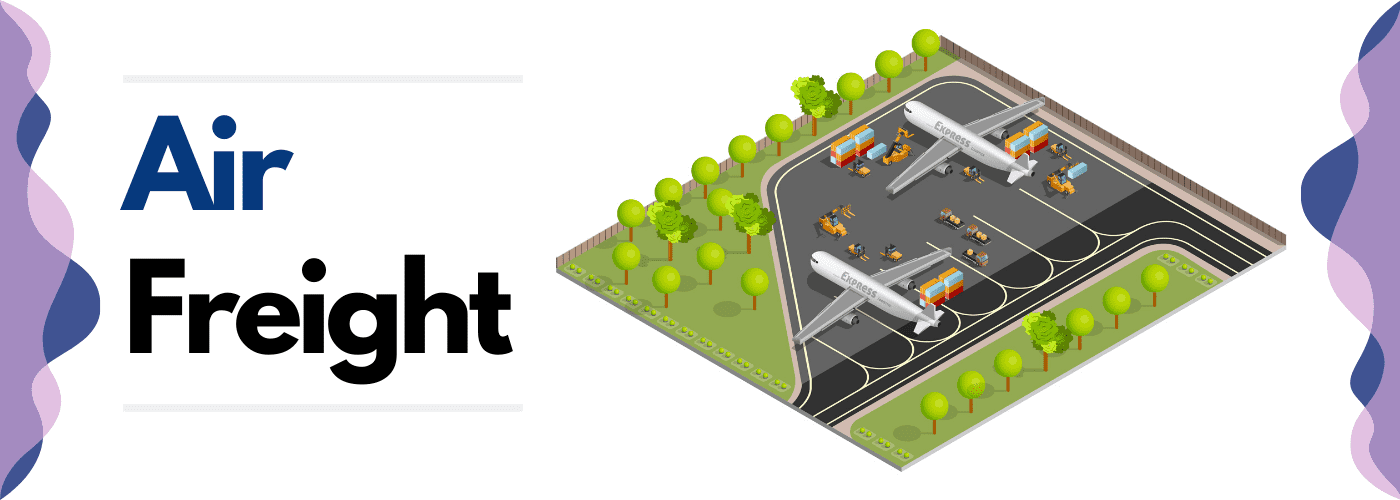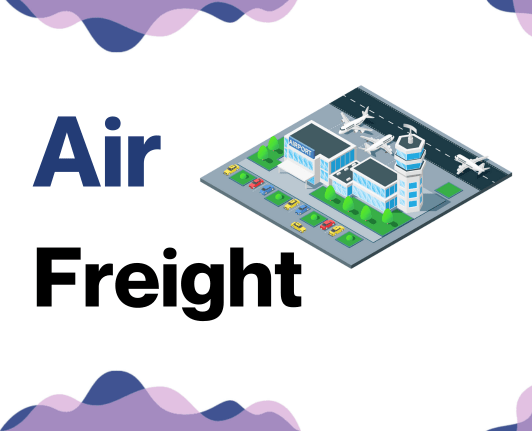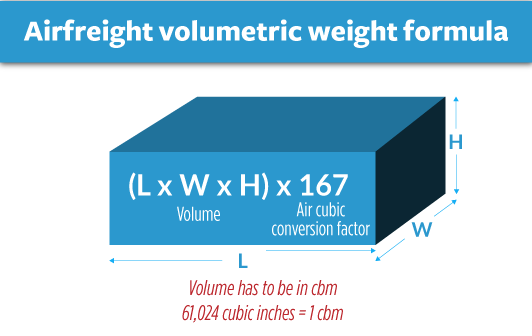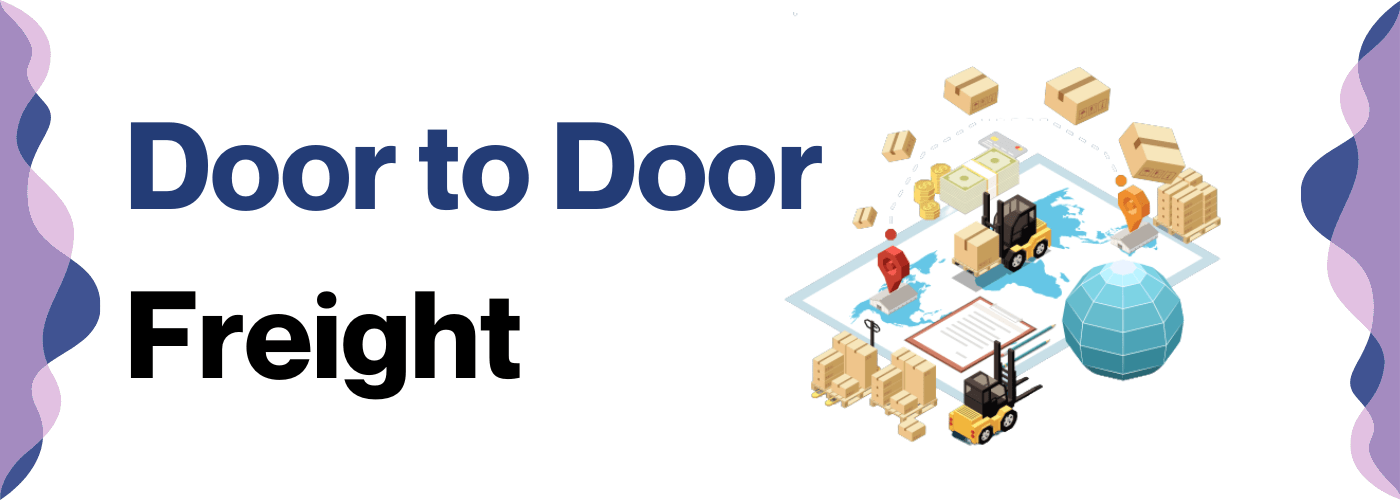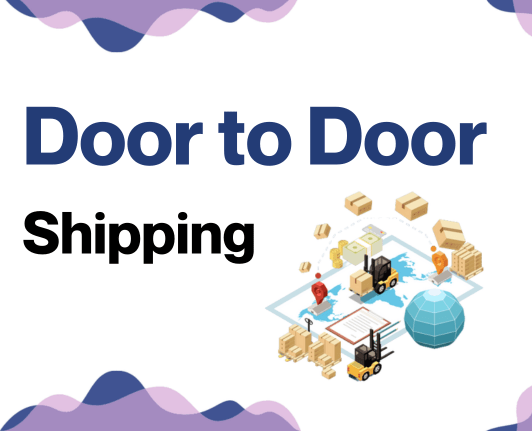Why did the package go on a vacation? Because it needed a 'break' from the UK to Serbia! Moving goods between these two regions can feel like a daunting task, with a truckload of logistical challenges such as elucidating rates, coping with transit times, and managing divergent customs regulations. This guide is your key to unlocking the complexities of the transportation process. You'll find insightful information on various freight options - be it air, sea, road, or rail, demystification of the customs process, and a complete breakdown of duties and taxes. We'll offer practical advice to help businesses thrive in their international trading journey. If the process still feels overwhelming, let DocShipper handle it for you! We are experts in turning the tide on shipping challenges and ensuring smooth sailings for your freight.
Table of Contents
Which are the different modes of transportation between UK and Serbia?
Determining the best transportation mode from the UK to Serbia involves a logistical puzzle. Picture this - it's like choosing the fastest route on a GPS. Air freight offers speed and precision, but it comes at a cost. Sea and rail routes are longer, like detours, but more cost-efficient, perfect for bulky goods. Road transport strikes the middle ground, balancing speed and cost. However, you must consider multiple border crossings, akin to intermittent stop signs on your journey. It's essential to consider your goods, budget, and delivery urgency, as you would while planning your perfect road trip.
How can DocShipper help?
Shipping goods from the UK to Serbia doesn't have to be a headache. At DocShipper, we take the complexity out of international freight forwarding. We handle the entire process, be it via air, sea, road or rail, so you can relax. Got questions? Our experienced consultants are a call away. Ready to start? Get a free, no-obligation quote in less than 24 hours. Reach out to us today!
DocShipper Tip: Ocean freight might be the best solution for you if:
- You're dealing with large quantities or oversized items. Sea freight offers a budget-friendly way to maximize space, a particularly useful option given the UK's extensive port network.
- Your shipment isn't on a tight schedule. Ocean transport typically takes longer than air or rail, but it offers reliability.
- Your supply chain involves key ports, allowing you to take advantage of a wide-reaching network of sea lanes.
Sea freight between UK and Serbia
The shipping link between the UK and Serbia is an economic artery, allowing businesses to circulate high-volume goods and thrive in both lands. Holding the reins is ocean shipping, where titanic vessels navigate from the thriving UK commercial hubs like Felixstowe and Southampton to Serbia's port of Belgrade, offering a cost-effective means to transport goods despite the clock ticking a bit slower.
But for many, shipping between these two nations can seem like a relentless tug-of-war. There are countless ropes to pull, like tackling customs regulations or avoiding common paperwork pitfalls - just to name a few. But it's not all stormy seas. Within this portion of the guide, we'll show you how to sail these transnational waters proficiently. From adhering to best practices to understanding specific requirements, we’re ready to offer a helping hand. So, come aboard and let’s set sail for smoother shipping operations.
Main shipping ports in UK
Port of Felixstowe
Location and Volume: Located in the southeast of England, the Port of Felixstowe is the busiest in the UK, handling over 40% of the country's containerized trade. It has a shipping volume of around 3.8 million TEU per annum.
Key Trading Partners and Strategic Importance: A substantial portion of the cargo it processes is with key trading partners like China, the rest of Asia, and North America. It's Europe's foremost hub for Asian trade and sits at the center of the global supply chain.
Context for Businesses: If you're planning to enter or expand your market in Europe or tap into the robust Asian markets, the Port of Felixstowe's strategic location and vast network connections can make it an integral part of your logistics strategy.
Port of Southampton
Location and Volume: Found on England’s south coast, the Port of Southampton is a leading port for automotive trade, handling around 900,000 vehicles annually. It has an estimated shipping volume of 2 million TEU.
Key Trading Partners and Strategic Importance: The port is a critical link in trade routes to Far East Asia, North America, and the Mediterranean. Automotive, containers, cruise, and bulk are among the port's key sectors.
Context for Businesses: Should your business specialize in automobile exports or imports, the Port of Southampton, with its dedicated vehicle handling facilities and experienced workforce, could be the ideal gateway for you.
Port of London
Location and Volume: Nestled beside England’s capital city, the Port of London is one of the most diversified ports in the UK. Though smaller than Felixstowe and Southampton in scale, its broad-based operations are significant, with a shipping volume reaching around 50 million tonnes yearly.
Key Trading Partners and Strategic Importance: It caters to a large mix of cargo, including bulk goods, shipment containers, and project cargoes from all-round the globe.
Context for Businesses: If your enterprise requires versatility in handling diverse types of cargo, the Port of London's comprehensive facilities make it an important consideration in your shipping plan.
Port of Liverpool
Location and Volume: Located on the northwest coast, the Port of Liverpool handles around 34 million tonnes of cargo annually and serves over 100 non-EU destinations.
Key Trading Partners and Strategic Importance: The port has established trade routes with numerous international partners, including the Americas, Africa, and Asia.
Context for Businesses: If your shipping strategy demands connectivity that spans across continents, the extensive global route coverage offered by the Port of Liverpool can be beneficial for your business.
Port of Grimsby & Immingham
Location and Volume: Situated on the Humber Estuary in North East Lincolnshire, the Port of Grimsby & Immingham is the UK's largest port by tonnage, with a volume surpassing 60 million tonnes per year.
Key Trading Partners and Strategic Importance: As the country’s leader in energy distribution, this port handles raw materials from around the world.
Context for Businesses: If the core of your business involves energy distribution, the Port of Grimsby & Immingham, due to its extensive capacity and infrastructure, may provide crucial support for your operations.
Port of Tees and Hartlepool
Location and Volume: Set on the Northeast coast of England, the Port of Tees and Hartlepool manages approximately 35 million tonnes of cargo annually, ranking it amongst the UK’s top five ports by volume.
Key Trading Partners and Strategic Importance: It accommodates a wide array of commodities, connecting with global and regional markets.
Context for Businesses: If your business operations call for flexibility in dealing with a range of commodities, the Port of Tees and Hartlepool's versatile facilities could be a vital component in your logistics plan.
Main shipping ports in Serbia
Port of Belgrade
Location and Volume: The Port of Belgrade is located at the confluence of the Danube and Sava rivers in Serbia. The port is crucial to river transport in southeastern Europe, handling thousands of tons of cargo annually.
Key Trading Partners and Strategic Importance: This port has vital trade links with Austria, Czech Republic, Slovakia, and Hungary, to mention a few. It serves as a regional hub for major international shipping lines and is of great strategic importance given its unique location—its connectivity to both rivers boosts its performance in the maritime sector.
Context for Businesses: Suppose your business aims to reach Central and Eastern European markets. In that case, the Port of Belgrade should play a significant role in your strategic transportation plan due to its wide network of connections and extensive handling facilities.
Port of Smederevo
Location and Volume: Positioned on the right bank of the Danube River, the Port of Smederevo is one of Serbia's principal ports. It handles a high volume of cargo, particularly raw materials like steel, coal, and agricultural produce.
Key Trading Partners and Strategic Importance: The key trading partners include Germany, Romania, Croatia, and the Netherlands. Playing a vital role in Serbia's economy, Port of Smederevo boasts the largest roll-on/roll-off RoRo terminal in the country, making it an excellent option for vehicular cargo.
Context for Businesses: If your company is in the automobile or heavy machinery industries, the Port of Smederevo, with its prestigious RoRo terminal, offers you a seamless connection to numerous European markets.
Port of Novi Sad
Location and Volume: Located on the left bank of the Danube River, the Port of Novi Sad has a significant handling volume, specializing in bulk and general cargos.
Key Trading Partners and Strategic Importance: Close trading relationships exist with the Netherlands, Austria, Germany, and Hungary. The port is of immense strategic importance; its developed infrastructure offers connections to main railway lines and roads, which makes it an intermodal transport hub for many international freight forwarders.
Context for Businesses: Considering expanding to broader European markets? This port’s extensive intermodal connections make it an excellent choice for your supply chain, especially if you handle bulk or general cargos.
Should I choose FCL or LCL when shipping between UK and Serbia?
When shipping goods between the UK and Serbia, you're faced with an impactful decision: opt for Full Container Load (FCL) or Less than Container Load, (also known as consolidation or LCL). This choice will steer your ocean freight journey, impacting cost, delivery speed, and overall success. Welcome to the strategic crossroads of shipping - let's unravel these options together, ensuring your decision is guided by knowledge and tailored to your unique shipping requirements.
LCL: Less than Container Load
Definition: Less than Container Load (LCL) shipping is a method of transportation where multiple shippers share the same container space for their shipments. It's typically best for cargo volumes less than 15 cubic meters (CBM), where the costs and space of a full container are not justified.
When to Use:
LCL shipping between the UK and Serbia is often a cost-effective and flexible solution for low-volume shipments. It's ideal when your cargo volume is less than 15 CBM - say 14, 13, or even less.
Example:
Imagine you're a UK manufacturer shipping 10 CBM of automotive parts to Serbia. Booking a full container would mean paying for unused space. Instead, sharing a container via an LCL shipment with other businesses means you only pay for the space your cargo uses. This reduces costs and promotes resource efficiency.
Cost Implications:
LCL freight comes with several cost benefits. Primarily, you're only paying for the space that your shipment occupies in the container. This is much more economical for smaller loads compared to paying for a full container that goes underutilized. However, there might be additional handling and administrative charges due to the need to consolidate and de-consolidate different cargoes.
FCL: Full Container Load
Definition: FCL, or Full Container Load, refers to a method of shipping where an entire container is used for a single shipment. This is typically known as 'FCL shipping'.
When to Use: FCL is advantageous when dealing with bulk quantities, ideally more than 13/14/15 CBM (Cubic Metres). It provides optimal cost efficiency for high-volume shipping as the 'FCL shipping quote' is often cheaper than LCL (Less than Container Load) for large shipments. Plus, an 'FCL container', either a '20ft container' or a '40ft container' depending on your needs, is sealed from origin to destination, enhancing the safety of your goods.
Example: Imagine you're a furniture manufacturer in the UK shipping goods to a retailer in Serbia. If your shipment includes hundreds of chairs, using FCL is best, as you'll fill an entire container thereby maximizing cost efficiency and ensuring product safety during transit.
Cost Implications: Opting for FCL rather than LCL means paying for the full container. However, the cost per unit becomes cheaper as the quantity increases. This is particularly beneficial for businesses routinely shipping high volumes, where cost savings with FCL can be significant.
Unlock hassle-free shipping
Confused whether to ship by consolidation or go for a full container between the UK and Serbia? With DocShipper at your service, make this decision like a pro! Our ocean freight experts, skilled in understanding factors such as cargo size, budget constraints, and shipment urgency, help simplify cargo shipping decisions. We're committed to making your international shipping experience smooth and hassle-free. Take the first step towards easy shipping. Contact us now for your free shipping estimate!
How long does sea freight take between UK and Serbia?
Sea freight services between the UK and Serbia typically take on average 7 days. It's important to note that transit times can vary, contingent upon several factors including the specific ports used, the weight of your shipment, and the nature of the goods being transported. For a precise quote tailored to your specific needs, it's advisable to contact a freight forwarder such as DocShipper.
When looking at the key freight ports in both countries, the average transit times are as follows:
| UK Port | Serbia Port | Average Transit Time (days) |
| Port of Felixstowe | Port of Belgrade | 6 |
| Port of Southampton | Port of Smederevo | 7 |
| Port of London | Port of Novi Sad | 7 |
| Port of Liverpool | Port of Belgrade | 8 |
*Please note that Serbia has only two major ports. For more specific transit times, consider reaching out to a trustworthy freight forwarder.
How much does it cost to ship a container between UK and Serbia?
We understand your curiosity about shipping costs! But, when it comes to pinning down a precise figure for ocean freight rates, it's tricky. That's because the shipping cost from the UK to Serbia per CBM can greatly vary. Factors like Point of Loading, Point of Destination, the choice of carrier, nature of goods, and even market fluctuations come into play. Don't fret, though! Our shipping specialists are on standby to crunch the numbers and provide you the best rates tailor-made to your needs. Remember, we deal with specifics, quoting on a case-by-case basis.
Special transportation services
Out of Gauge (OOG) Container
Definition: An OOG Container, or 'Out of Gauge' container, is a specially designed shipping option that caters to goods that cannot fit into standard shipping containers because of their dimensions or weight.
Suitable for: Out of gauge cargo like large machinery, construction materials, turbines, or oversized vehicles.
Examples: Large industrial equipment or heavy machinery like an excavator that exceeds the size of a regular container.
Why it might be the best choice for you: If your goods are large and don't easily fit within the standard container dimensions, OOG is your perfect solution.
Break Bulk
Definition: Move over to Break Bulk when you deal with cargo that's too large to fit into containers. These goods are individually loaded onto the ship, not in containers.
Suitable for: Oversized equipment, large construction materials, heavy machinery, or big batches of goods.
Examples: Yachts, cranes, transformers, or large pipes that often exceed the standard container dimensions.
Why it might be the best choice for you: If you need to ship loose cargo loads, not container-compatible, then Break Bulk shipping is an excellent choice for your business.
Dry Bulk
Definition: The Dry Bulk method involves the transportation of unpackaged bulk goods like grains, coal, cement, and minerals.
Suitable for: Dry commodities that don't require special conditions during transit.
Examples: Large quantities of coal, grain, or raw metal ores.
Why it might be the best choice for you: If your business deals with large volumes of unpackaged goods that don't require specific handling or temperature regulations, Dry Bulk is the most efficient and cost-effective method.
Roll-on/Roll-off (Ro-Ro)
Definition: The Ro-Ro method involves goods rolled onto a ro-ro vessel on their wheels (like motorcycles, trailers, trucks, or rail cars), or using a platform vehicle.
Suitable for: Motor vehicles and wheeled machinery.
Examples: Cars, trucks, semi-trailer trucks, trailers, and railroad cars.
Why it might be the best choice for you: If your business needs to ship vehicles or machinery that can be driven on and off the vessel, Roll-on/Roll-off method is the most straightforward and effective way.
Reefer Containers
Definition: Reefer Containers are refrigerated shipping containers used to transport temperature-sensitive cargo. They maintain a specific temperature, ensuring the goods remain fresh during transit.
Suitable for: Perishable items like fruits, vegetables, dairy products, or meats. It's also suitable for Pharmaceuticals that require temperature-controlled environments.
Examples: Fresh produce, processed food, pharmaceutical goods, or temperature-sensitive chemicals.
Why it might be the best choice for you: If your business handles products that require controlled temperatures during transit, reefer containers are an essential choice for preserving product quality and safety.
Navigating the sea freight shipping options from the UK to Serbia can be complex and overwhelming. At DocShipper, we are dedicated to helping businesses like yours understand their shipping options. For a free shipping quote in less than 24 hours, don't hesitate to contact us.
DocShipper Tip: Air freight might be the best solution for you if:
- You're facing tight deadlines or need rapid delivery. Air freight is your quickest option, which aligns well with the fast-paced business environment.
- Your shipment is relatively small, under 2 CBM. Air freight is ideal for these more compact loads.
- Your cargo's destination isn't easily reached via sea or rail. This makes air freight a viable option, especially given the extensive network of airports available.
Air freight between UK and Serbia
Air freight from the UK to Serbia: imagine it as the flying superhero among shipping methods. It's faster than a speeding bullet train, more reliable than a Swiss watch, and more agile than a ballet dancer. Think small but important cargo – high-value electronics, vital medicines – all reaching Belgrade from London in the blink of an eye. But let's not forget the pitfalls many shippers face, often leaving them with a bitter taste of regret. Misunderstood weight calculations, underestimated costs – these can transform your sleek bird of prey into a clumsy turkey. Step by step, we'll avoid these traps to keep your business soaring high.
Air Cargo vs Express Air Freight: How should I ship?
Looking for an efficient way to ship your goods between the UK and Serbia? One recommendation is air cargo, which typically signifies a shared airline space where goods journey alongside other freight. If urgency is key, you might opt for express air freight where your merchandise soars solo in a dedicated plane, promising even faster delivery. Let's break down your options to find your perfect shipping match.
Should I choose Air Cargo between UK and Serbia?
Considering shipping between the UK and Serbia? Air cargo can be a reliable and cost-effective option, especially when your shipment exceeds 100/150 kg (220/330 lbs). Trusted airlines like British Airways or AirSERBIA provide comprehensive cargo services, ensuring your goods reach their destination win time. Keep in mind, however, that you might face longer transit times due to their fixed schedules. Depending on your budget and timing, air cargo could work well for you.
Should I choose Express Air Freight between UK and Serbia?
Express air freight involves dedicated cargo planes transporting your goods with no passengers onboard. If your shipment is under 1 CBM or weighs between 100 and 150 kg (220 and 330 lbs), this mode of transportation, offered by renowned international courier services such as FedEx, UPS, or DHL, could be optimal. This fast, reliable method ensures your goods reach Serbia from the UK swiftly and safely. Ideal for time-sensitive or high-value items, express air freight offers precise tracking and minimal handling, reducing the risk of damage or loss. Assess your shipping needs to understand if this choice suits you best.
Main international airports in UK
Heathrow Airport
Cargo Volume: Heathrow handles over 1.7 million metric tonnes of cargo every year, making it the UK's busiest airport for air freight.
Key Trading Partners: Primarily trades with the USA, China, and India.
Strategic Importance: As one of the world's busiest airports, Heathrow is strategically located close to London's business hub, offering enhanced connectivity to numerous international destinations.
Notable Features: Boasts two parallel runways and five terminals. Heathrow's World-class cargo facilities include temperature-controlled storage distinctive for perishable and sensitive goods.
For Your Business: Heathrow's extensive network and high volume capacity could allow for efficient and prompt transport of your goods. If your business involves perishable or sensitive goods, Heathrow’s state-of-the-art facilities may ensure quality preservation from source to destination.
East Midlands Airport
Cargo Volume: East Midlands Airport handles over 320,000 tonnes of cargo annually, second only to Heathrow.
Key Trading Partners: Primarily trades with Germany, the Netherlands, and France.
Strategic Importance: A central hub for freight and logistics due to its geographic position at the heart of the UK, with 90% of England and Wales within a four-hour drive.
Notable Features: A dedicated Air Cargo Centre, 24-hour operation capability, and proximity to the UK's large e-commerce fulfillment centers.
For Your Business: If your trading ties are in Central Europe and you prefer road transport for last-mile deliveries within UK, East Midlands could offer flexibility and efficient connectivity.
Manchester Airport
Cargo Volume: Moves more than 100,000 tonnes of import and export freight and mail annually.
Key Trading Partners: Primary trade partners are the USA, Europe, and the Middle East.
Strategic Importance: As the third largest airport in the UK, it provides a significant gateway to Northern England and Scotland.
Notable Features: Offers three terminals, two runways, and advanced cargo handling facilities.
For Your Business: If your business is based in Northern England or Scotland, using Manchester Airport for freight could reduce domestic transport time and costs, making it potentially vital for your supply chain.
Stansted Airport
Cargo Volume: Processes over 230,000 tonnes of cargo annually.
Key Trading Partners: Mainly trades with the USA, Asia and Europe.
Strategic Importance: Located near London, it serves as a critical hub for freight transport to the capital and beyond, with its largest cargo operator being FedEx/TNT.
Notable Features: Modern cargo facilities, including a FedEx and TNT hub, temperature-controlled spaces for pharmaceutical products, and facilities for handling oversized cargo.
For Your Business: Stansted's infrastructure could be a boon if your business trades frequently with Asia or the US, or if it relies on FedEx or TNT for shipping services. The temperature-controlled spaces may also be valuable for businesses in pharmaceuticals.
Glasgow Prestwick Airport
Cargo Volume: Handles around 13,000 tonnes of freight per year.
Key Trading Partners: Primarily trades with the USA and Europe.
Strategic Importance: Though not as high-volume as its English counterparts, this airport maintains an important role for Scottish businesses needing to move freight, as it is the only Scottish airport with a dedicated cargo terminal.
Notable Features: Provides a wide variety and flexibility of services, from small consignments to outsized cargo. Also, being on the west coast of Scotland, it has lower weather disruption.
For Your Business: If your business needs to reach areas in and around Scotland, or if weather disruption has been a consistent issue, Glasgow Prestwick's services and geographical position may be ideal for your transportation needs.
Main international airports in Serbia
Belgrade Nikola Tesla Airport
Cargo Volume: In 2020, the airport handled over 22,000 metric tons of cargo.
Key Trading Partners: Major partners include Germany, Italy, Russia, China, and other member countries of the EU.
Strategic Importance: Being the largest and busiest airport in Serbia, it serves as a major hub connecting Eastern Europe to the rest of the world.
Notable Features: The airport is equipped with modern facilities for air cargo.comprised of two separate terminals with capacity to handle all types of cargo.
For Your Business: The airport's location and capabilities make it an ideal choice for businesses looking to trade with countries in Eastern Europe. Its modern cargo facilities ensure efficient handling, making sure your goods reach their destination in a timely manner.
Niš Constantine the Great Airport
Cargo Volume: While smaller than Belgrade airport, Niš is growing fast. It has the potential to handle significant volumes, especially with recent infrastructural developments.
Key Trading Partners: Key trading partners include European countries, especially Switzerland, Germany, and Slovenia.
Strategic Importance: It plays a key role in serving the southern regions of Serbia and has seen substantial growth due to its strategic location in the Balkans.
Notable Features: The airport houses a dedicated cargo terminal and has announced plans for expansion, meaning it is equipped to handle future growth in cargo volumes.
For Your Business: If your business is focused on the Balkans or South Eastern Europe, Niš can be an optimal choice. Its growth potential and expansion plans ensure that businesses can use it as a reliable cargo transportation hub.
How long does air freight take between UK and Serbia?
Shipping goods between the UK and Serbia by air freight typically takes around 1-3 days. Keep in mind, this transit time can fluctuate, influenced by factors such as specific airports, the weight of the shipment, and the nature of the commodities being transported. For accurate and personalized delivery schedules, it's always best to consult a seasoned freight forwarder, such as DocShipper.
How much does it cost to ship a parcel between UK and Serbia with air freight?
Air freight costs from the UK to Serbia start at a rough average of $4.00 per kilogram. However, the exact cost can't be generalized as it depends on various factors such as distance between departure and arrival airports, parcel dimensions, weight, and nature of goods among others. Our team understands these complexities and is committed to providing the best, most cost-effective shipping solution for your specific needs. We quote on a case-by-case basis to give you the most accurate and competitive rates. Contact us and receive a free quote within 24 hours.
What is the difference between volumetric and gross weight?
When dealing with air freight, 'gross weight' is the actual weight of your shipment, including any packaging. On the other hand, 'volumetric weight' considers both the weight and how much space your shipment takes up in an aircraft.
For Air cargo, calculate the volumetric weight by multiplying the length, width, and height (in centimeters) of your package and dividing the result by 6,000. For Express Air Freight, the divisor is 5,000.
Let's take a hypothetical shipment. A package weighs 25 kg (55.1 lbs) and dimensions are 40cm x 35cm x 30cm. In Air Cargo, its volumetric weight would be (40 x 35 x 30) / 6,000 = 7 kg (15.4 lbs). Using Express Air Freight, the volumetric weight would be (40 x 35 x 30) / 5,000 = 8.4 kg (18.5 lbs).
Your freight charges are determined based on whichever is higher: the gross or volumetric weight. Understanding these calculations is key to finding the most cost-effective solution for shipping your goods.
DocShipper tip: Door to Door might be the best solution for you if:
- You prioritize ease and a hassle-free shipping experience. Door-to-door services manage the entire process, from collection to final delivery.
- You appreciate the efficiency of having one dedicated contact. With door-to-door, a single agent is responsible for overseeing all elements of your shipment.
- You want to limit the number of times your cargo is transferred. Door-to-door services minimize the switches between various transport methods, lowering the chances of damage or loss.
Door to door between UK and Serbia
Door-to-door shipping simplifies your freight journey from the UK to Serbia, encapsulating all stages from pick-up to final delivery. This stress-free option offers unparalleled convenience, financial predictability, and is time-efficient. So, ready to explore the complete control and comfort of door-to-door shipping? Let's dive in!
Overview – Door to Door
Shipping between the UK and Serbia can feel like navigating a maze. But door to door shipping offers a seamless solution, eliminating your stress about the journey your goods take. This service, a favourite among our DocShipper clients, saves you from customs complexities and transit challenges. However, it’s not perfect; costs can be slightly higher and delivery times may be longer due to customs procedures. Clearly, door to door service trades a little time and cost for a lot of stress-relief. So, if you value peace of mind, this could be your go-to shipping option.
Why should I use a Door to Door service between UK and Serbia?
Ever heard the phrase, Time is money? Well, in international logistics that's the absolute truth! Here are five compelling reasons for choosing Door to Door service for shipping your goods from the UK to Serbia.
1. Say Goodbye to Logistics Stress: By choosing a Door to Door service, you hand over the shipment responsibility to professionals - right from pick-up in the UK to the final delivery in Serbia. You'll sleep tight, knowing the complex process of transport, customs clearance, and administrative procedures are all taken care of.
2. Time-Sensitive Deliveries: Imagine having an urgent shipment but feeling lost in the complex matrix of logistics – scary thought, yes? Worry no more. This service is geared towards ensuring your valuable goods reach on time, every time.
3. Special Attention, Always: Got some complex cargo? No problem! With Door to Door service, your goods are treated with utmost care and specialized attention they deserve - ensuring safe and secure transportation.
4. Super-Convenient: This service offers unparalleled convenience - no more coordinating with multiple carrier companies, no more tracking different legs of the journey. It's like the Netflix of international shipping: sit back, relax, and enjoy the convenience.
5. Trucking? Sorted: The service includes trucking from your doorstep in the UK, to the final destination doorstep in Serbia. Imagine cutting out all that trucking stress.
There you have it, folks! A life vest in the vast sea of logistics, providing not just a service, but peace of mind and confidence in safe, swift and efficient transport of your goods from UK to Serbia.
DocShipper – Door to Door specialist between UK and Serbia
Experience hassle-free, door-to-door shipping between the UK and Serbia with DocShipper. Our skilled team manages every step including packing your goods, arranging transport, and handling customs across all shipping modes. You won't lift a finger while you get a dedicated Account Executive at your service. Request a free estimate within 24 hours or dial up our consultants anytime, free of charge. Shipping doesn't have to be stressful, let DocShipper make it simple.
Customs clearance in Serbia for goods imported from UK
Customs clearance is a meticulous process that enables the import of goods from the UK to Serbia, demanding an in-depth understanding of customs duties, taxes, quotas, and licenses. This intricate procedure often leads to unexpected costs and delayed shipments, thereby complicating the initial plan. There's a looming risk of cargoes getting stuck at customs if the process isn't handled professionally. A clear comprehension of this area will enable smoother transactions and limit unexpected roadblocks. The following sections will guide you through the labyrinth of Serbian customs regulations. At DocShipper, we're committed to supporting you every step of the way, lending our local knowledge and expertise to ensure seamless shipping experiences. So, if you need a quote to help plan your project, give our team a shout with your goods' origin, value, and the mandatory HS code. We are here to help navigate your international logistics journey.
How to calculate duties & taxes when importing from UK to Serbia?
Unraveling the mechanics of duties and taxes while importing goods from the UK to Serbia can be a complex task, but breaking it down into digestible chunks can make the process far less daunting. Understanding that the estimation of customs duties relies on certain key factors is integral. These pillars include the country of origin, the unique HS Code for your product, the Customs Value denoted usually by the price you paid for the goods, the Applicable Tariff Rate, and other specific taxes and surcharges that may apply to your cargo.
To start with, determining the country where the goods you're importing were crafted or produced is your first port of call. This forms the foundation of all subsequent calculations, thus initiating your journey in the world of import duties and taxes.
Step 1 - Identify the Country of Origin
Identifying the Country of Origin can feel like stating the obvious, but it's a key first step before obtaining the Harmonized System (HS) code. Here’s why:
1. Determining Duties: The origin country plays a vital role in figuring out your customs duties as tariffs may fluctuate based on this.
2. Trade Agreements: UK and Serbia have trade agreements like the Stabilisation and Association Agreement (SAA) that can affect duties.
3. Compliance: A clear understanding of origin helps adhere to import restrictions Serbia may have against certain foreign goods.
4. Legal Issues: Avoid potential legal hassles, reputation damage, and extra costs due to non-compliance.
5. Avoid Delays: Ensure a smoother, quicker customs clearance, dodging potential transport hold-ups.
Specifically, the SAA between UK and Serbia affects import duties, potentially granting certain UK goods preferential tariffs. Check out the agreement details to identify if your goods qualify.
As for import restrictions, Serbia has some against chemicals, plant products, and narcotics amongst others. Make sure you are in the clear to stay compliant.
Remember, each import journey starts with a firm grasp on the Country of Origin. It helps you navigate the import landscape with greater confidence and ease.
Step 2 - Find the HS Code of your product
The Harmonized System (HS) Code is a universally accepted classification system that assists in the smooth operation of trade. It helps to categorize, define, and codify various commodities. With each product claimed under a specific HS Code, it defines associated tariffs and regulatory requirements, playing a crucial role in export-import procedures.
Oftentimes, the most straightforward way to find your product's HS Code is to inquire directly from your supplier. As they deal with importing goods and compliance with related regulations routinely, it's highly likely they'll know the necessary HS Code.
In cases where you need to identify the HS code independently, we'll guide you through a step by step process. Start by employing an HS lookup tool such as the Harmonized Tariff Schedule to find the code relevant to your product. Enter your product's name in the search bar and navigate through the results. The HS Code will be present in the 'Heading/Subheading' column for each item.
However, it's crucial to accurately identify the HS Code suited to your product. Inaccuracy or mistakes could result in undesirable setbacks, including shipping delays and enforcement of penalties, which could significantly affect your businesses bottom line.
Here's an infographic showing you how to read an HS code. This guide will offer a visual and simplified approach to understanding HS Codes, enhancing your knowledge and confidence in managing international trade operations.
Step 3 - Calculate the Customs Value
Undoubtedly, understanding customs value can be a tricky part of the importing process. While you might think it's identical to your product's price, that's not the case. The customs value, actually, is the Comprehensive Insurance and Freight (CIF) value, which includes the price of your goods, international shipping costs, and the cost of insurance.
For example, if you were importing a $5000 product from the UK to Serbia, and your shipping costs are $1000, with insurance charges at $300, the Customs Value would be $6300, not $5000.
Knowing the correct customs value ensures you pay the right amount in duties and taxes, avoiding any costly underpayments or time-consuming overpayments. So, mastering this calculation is a crucial step in your importing journey.
Step 4 - Figure out the applicable Import Tariff
An import tariff is essentially a tax imposed on imported goods. It adds to the overall cost of importing goods and varies widely, depending on the kind of goods and their country of origin. In Serbia, the commonly used tariff is the Most Favored Nation (MFN) tariff which applies to countries with which it enjoys significant trade relations.
Now, determining the import tariff for the UK involves the following steps:
1. Visit the UK trade tariff consultation tool.
2. Enter the Harmonised System (HS) code identified earlier, and specify the country of origin (in this case, the UK).
3. You can now see the duties and taxes applied to your product.
Let's put that into practice, say you're importing plastic tableware (HS code: 3924.10) from the UK. After checking the trade tariff tool, you learn the tariff rate is 5%.
Now, let's calculate the import duties. Assuming a Cost, Insurance, and Freight (CIF) value of USD 10,000 for your goods, simply multiply this by the tariff rate: i.e., $10,000 5/100 = $500.
Remember, the entire process depends on the precise HS code and the tariff tool's information accuracy. Detailed, accurate comprehension helps avoid unwanted surprises and maintains the expected profit margins.
Step 5 - Consider other Import Duties and Taxes
In addition to the standard tariff rate, you might encounter other import duties based on your product's nature or its origin country. Here's some insight into the additional costs you might face when importing goods from the UK to Serbia.
1. Excise Duty: If you're shipping certain goods like alcohol, tobacco or energy products, you might need to pay excise duty. For example, let's say you're importing wine valued at $1000, and the excise duty rate is 10%, so you have to pay $100 additionally.
2. Anti-Dumping Taxes: If the goods you're importing are sold below their normal value in the country of origin, this tax applies. For instance, inexpensive steel imported may face additional charges.
3. VAT: This is a key point to consider. Serbia has a standard VAT rate of 20%, and certain goods qualify for a reduced rate of 10%.
Suppose you're importing goods valued at $10000, you have to pay $2000 as VAT (this assumes the standard rate).
Please understand these are simplistic examples to explain the concept. Actual rates can vary. Always verify current rates to prevent any financial surprises. Shipping internationally can be complex, but, forewarned is forearmed.
Step 6 - Calculate the Customs Duties
In this step, customs duties become the core of your attention. The basic formula rests on the customs value comprising the cost of your goods, insurance, and freight (known as CIF). For instance, consider you have a consignment valued at $1,000, with a customs duty rate of 5%, yielding a customs duty of $50. But what if the VAT, another duty liable on imported goods, with a standard rate of 20%, comes into the picture?
Your total amount for duty after adding customs duty ($50) and VAT on sum of customs value and customs duty $1,050 x 20% = $210, will make $260. For an intricate scenario with anti-dumping taxes and excise duty, let's assume an extra 10% anti-dumping tax and $100 as fixed excise duty. The final value will consider VAT $1,160 x 20% = $232, yielding a final duty of $392.
But don't be overwhelmed. DocShipper can streamline your customs clearance process worldwide, ensuring fair charges. For a speedy and free quote in less than 24 hours, connect with us today. Snag your opportunity to ship smarter, not harder!
Does DocShipper charge customs fees?
When transporting goods, understanding fees is crucial. As your customs broker, DocShipper won't charge you any customs duties, those go directly to the government. However, we will charge for customs clearance, a separate fee for facilitating your goods through the process. Fear not, we provide documents from the customs office to prove you're paying only what's required. Remember, these two fees can often be confused but play distinct roles in your shipment's journey. It's just another side of global business.
Contact Details for Customs Authorities
UK Customs
Official name: Her Majesty's Revenue and Customs (HMRC)
Official website: https://www.gov.uk/
Serbia Customs
Official name: Customs Administration of the Republic of Serbia
Official website: https://www.carina.rs/en.html
Required documents for customs clearance
Getting your goods through customs can feel like a maze, right? It all hinges on the right paperwork. Dive into our guide to learn about the Bill of Lading, Packing List, Certificate of Origin, and Documents of Conformity. Confidence, here you come!
Bill of Lading
A Bill of Lading (BOL) is essential when moving your goods from the UK to Serbia, serving essentially as a legal handshake between the shipper and carrier. It confirms that your shipment has been received in good condition and details the nature, quantity, and destination of the goods. For modern conveniences, there's electronic or telex release BOLs, saving you from handling a paper document while having the same validity. If you're flying your shipment over, an Airway Bill (AWB) is used in place of a BOL. Remember, the devil is in the details; ensure every piece of information in your BOL or AWB is accurate to avoid unnecessary customs hurdles and shipment delays. It's a little thing that can make a big difference.
Packing List
Shipping goods between UK and Serbia? Here’s a tip: don't underestimate the humble Packing List. Regardless of whether you're shipping air or sea freight, it’s your reliable road map guiding customs officials through your shipment. It’s your responsibility as a shipper to provide this document and, most importantly, ensure it’s accurate. Think about it, if you've ever received a package with an erroneous description, you know how frustrating it can be. Magnify that if your cargo is vast and varying, shipped across borders! If even one product's description or quantity doesn't match what’s in the crate, expect customs delays and additional costs. So, ensure each item, its description, weight, and quantity match perfectly. The Packing List might seem like just a piece of paper, but in international shipping, it's your ticket to smoother customs clearance.
Commercial Invoice
When shipping goods from the UK to Serbia, your Commercial Invoice acts as a customs declaration. It's pivotal to accurately present the value and nature of goods, VAT ID, and Buyer’s EORI details. Ensuring these specifics aligns your invoice with other key shipping documents, smoothing the customs clearance process.
Consider this scenario: If your business exports bespoke furniture, a well-detailed Commercial Invoice helps Serbian customs officials evaluate your shipment for duties swiftly, avoiding delays. So, it's not just a formality, but a passport for your goods. Make it a priority, and you'll find customs clearance isn't as complicated as it seems.
Certificate of Origin
Navigating the nuances of shipping from the UK to Serbia can seem tricky, but having proper documents like the Certificate of Origin (CoO) can make the process smoother. This vital document verifies the country where your goods have been manufactured. Let's say you're shipping home appliances made in Leeds to Belgrade. The CoO will confirm this UK origin, providing transparency on the supply chain journey. Plus, having a correct CoO might just make you eligible for reduced customs duties under preferential trade agreements. Quite a win-win, right? So, always ensure to have your CoO shipshape and at the ready, as it can realize value beyond just clearance.
Certificate of Conformity (CE standard)
When it comes to shipping goods between the UK and Serbia, the Certificate of Conformity (CE Standard) plays an integral role. Contrary to quality assurance that advocates for systemic processes to deliver quality products, the CE standard is about harmonizing and setting product requirements at a high safety, health, and environmental protection level. Here's an example, if you're shipping electronics, they need to adhere to CE standards to ensure safety - it's like the FCC standards of the US but for the European market. Keep in mind, due to Brexit, the UK now uses its own UKCA marking, not the CE marking. Therefore, if you're shipping goods into the UK from Serbia, be sure to investigate the exact UKCA requirements for your product. Tailoring your compliance strategy to each country's requirements will greatly streamline passage through customs.
Your EORI number (Economic Operator Registration Identification)
Shipping between the UK and Serbia? Your EORI number is an essential key. This unique identifier is your ticket to smoother customs clearance, tracking your shipments as they travel across borders. Think of it as your business's ID in the world of imports and exports. Remember, as the UK waved goodbye to the EU, obtaining an EORI number from Her Majesty's Revenue and Customs (HMRC) became a necessity. For operations with Serbia, register for the EORI, regardless of Serbia's non-EU status. Your registration process, fortunately, is straightforward: go online to the HMRC website and fill out the form—most businesses receive their number within a week. Keep this number handy; it's your trusted companion for your global commerce adventures.
Get Started with DocShipper
Navigating customs can be complex and time-consuming. Let DocShipper lighten your load. Our dedicated team ensures seamless customs clearance for your UK-Serbia shipments, mitigating risks and delays. Ready to streamline your shipping process? Contact us today and receive a free, no-obligation quote within 24 hours. Let's make global shipping simpler, together.
Prohibited and Restricted items when importing into Serbia
Understanding import rules for Serbia is a tough task. Your business could face serious setbacks if you unknowingly ship prohibited or restricted items. Let's delve into Serbian import regulations, so nothing stops your goods reaching their destination.
Restricted Products
In Serbia, some goods can't be freely imported or exported without special permissions. Here's the list you're looking for:
1. Medicine and Pharmaceutical Products: You've got to acquire a license from the Medicines and Medical Devices Agency of Serbia.
2. Firearms and Ammunitions: Look into getting a permit from the Ministry of Interior of the Republic of Serbia.
3. Petroleum and Petroleum Products: You'll need to secure a license from the Ministry of Mining and Energy, Serbia.
4. Tobacco Products: Be sure to get approval from the Ministry of Trade, Tourism, and Telecommunications, Serbia.
5. Nuclear material, Facilities and Equipment: The Serbian Radiation and Nuclear Safety and Security Directorate issues permits for these items.
6. Endangered Species of Wild Fauna and Flora: The Ministry of Environmental Protection, Serbia gives the green signal for these.
Familiarize yourself with the rules for these products to avoid hiccups in your international shipping plans. Happy Shipping!
Prohibited products
- Narcotic drugs except for medicines with special permit
- Weapons and ammunition, except for hunting weapons with special permit
- Tobacco products not labelled with excise stickers
- Professional radio and telecommunication equipment without relevant permit
- Plants and plant products not accompanied with phytosanitary certificate
- Fruit flies and similar pests
- Cultural artefacts without necessary documentation
- Publications, audio and video material that are against Serbian constitutional order
- Live animals without veterinary certificate
- Endangered species of animals, their parts or derived products, except with special permit
- Counterfeit goods and currency.
Are there any trade agreements between UK and Serbia
Yes, there's a trade agreement in place between the UK and Serbia - the UK-Serbia Trade and Cooperation Agreement. This FTA allows access to preferential tariffs, making it more cost-effective for businesses shipping between the countries. While there are no ongoing infrastructure developments currently, it's crucial to remain updated on UK-Serbia trade relations for potential future opportunities. This deal can significantly impact your business decisions, from choosing shipping methods to pricing your goods for export or import.
UK - Serbia trade and economic relationship
A historical tie binds the UK and Serbia that goes beyond politics, paving the way for engaging economic relations. Serbia, with its strategic location, serves as an attractive partner for the UK within the Balkan Peninsula, boasting a bilateral trade valued at roughly £1 billion as of 2023. Key sectors of shared interest include IT, agriculture, and energy. Increasing their prominence in these sectors are major commodities such as machinery and pharmaceuticals that form a significant chunk of imports from the UK. The relationship was enhanced further when the UK ambitiously invested in Serbia. This synergy folds into a shared agenda of supporting sustainable, inclusive economic growth for both countries in the years to come. It underpins the importance of freight services as a bridge between these two nations, helping to maintain, if not grow, their economic interconnectedness.
Your Next Step with DocShipper
Undaunted by complex UK-Serbia shipping regulations? Worry no more! At DocShipper, we turn daunting tasks into smooth sailings. We're not just experts in air, sea, road, and rail logistics, we're your guides in the jungle of customs clearance and paperwork. Don’t journey alone! Let us make your global business thrive. Connect with us now to ease your shipping process!
Additional logistics services
Explore DocShipper's spectrum of additional services, designed to streamline your entire supply chain. From storage and packaging to regulations compliance and insurance, we've got your logistical needs fully covered. Let's unravel each of these services.
Warehousing and storage
Finding the right warehousing solution can be a tricky obstacle, especially when you're shipping across the UK and Serbia. Trying to maintain ideal conditions, like just-right temperatures for perishables, is no small feat. But fear no more! Our reliable warehousing services are here to help, packed with optimal conditions to guard your goods' integrity. More info on our dedicated page: Warehousing.
Packaging and repackaging
Ensuring safe transport between the UK and Serbia hinges heavily on apt packaging and repackaging. With the right agency, delicate porcelains to bulky machinery can be securely prepped for their journey. Consider contractual issues that led to a batch of craft beers requiring repackaging in Belgrade - a dedicated agent could save you from such hiccups. The right packaging agent is your shield against transit woes. Dig deeper into this topic on our dedicated page: Freight packaging.
Cargo insurance
Cargo insurance goes beyond typical fire insurance, acting as a superhero for your shipments. Think of it not just as 'coverage' but as 'prevention'. For instance, imagine your precious ceramics, bumpy road, and an unfortunate pot-hole - boom, damaged goods! But with cargo insurance, you dodge that financial hit. Transfer risks and sleep soundly knowing your goods are protected. Interested to prevent such scenarios? More info on our dedicated page: Cargo Insurance.
Supplier Management (Sourcing)
Want to source and manufacture abroad without the language barrier hassle? Here's where DocShipper steps in. We specialize in finding trustworthy suppliers in Asia, East Europe and beyond, handling the entire procurement process end-to-end. Imagine partnering with a Chinese or Serbian manufacturer, smoothly, without any communication hiccups. We make it happen. Check out our Sourcing services for more details.
Personal effects shipping
Moving your cherished and hefty items between the UK and Serbia? Opt for our Personal Effects Shipping service, ensuring a robust yet sensitive approach to your needs. Picture transporting your grandma's antique cabinet with the ease of a book - that's us! For the details on how we pamper personal belongings, visit our devoted page: Shipping Personal Belongings.
Quality Control
Having rigorous eyes on your product during manufacturing or customization can be a true game-changer when shipping between the UK and Serbia. Quality Control lets you catch any issue before your goods are sent off, reducing risks of non-compliance and ensuring your products meet international standards. Think instances like failed tools in a shipment of equipment, caught just in time! Experience peace of mind ahead of your journey. More info on our dedicated page: Quality Inspection.
Product compliance services
International shipping can often feel like a maze of regulations. Our Product Compliance Services are here to ease your worries. We provide vital testing in our labs to ensure your goods meet all necessary regulations, taking the guesswork out of compliance. So, dodge those customs conundrums with our expert assistance! More info on our dedicated page: Product Compliance Services.
FAQ | For 1st-time importers between UK and Serbia
What is the necessary paperwork during shipping between UK and Serbia?
When shipping from the UK to Serbia, we at DocShipper handle the preparation of the bill of lading for sea freight or air waybill for air freight. Meanwhile, you'll need to equip us with the packing list and commercial invoice for your goods. There may be requirements for additional documents depending on the nature of your goods, for example, Material Safety Data Sheets (MSDS) or certain certifications. We're here to ensure that the shipping process is as smooth as possible.
Do I need a customs broker while importing in Serbia?
Absolutely, employing a customs broker can be of great help when importing goods in Serbia. The reason being, the intricate procedural requirements and necessary documentation can prove to be a challenging task. As your freight forwarder, we, at DocShipper, assist and represent your cargo with the customs authority for most shipments. This practice streamlines the process and helps you navigate through the complexities, ensuring a swift and hassle-free import experience. Our extensive understanding of custom regulations and import requirements can save you time and potential regulatory complications. So, while it's not a legal necessity, we strongly recommend using our customs broker services for your import needs in Serbia.
Can air freight be cheaper than sea freight between UK and Serbia?
While the cost of air and sea freight between the UK and Serbia depends on variables such as route, weight, and volume, there's a rule of thumb that could help you out. If your cargo is less than 1.5 Cubic Meters or weighs under 300 kg (around 660 lbs), air freight can be favorable from a financial perspective. As always, we at DocShipper strive to provide you with the most competitive options. Your assigned account executive will work closely with you to determine the best choice based on your unique needs and circumstances.
Do I need to pay insurance while importing my goods to Serbia?
As DocShipper, we would like to clarify that insurance isn't a mandatory requirement for importing goods to Serbia, or anywhere in the world for that matter. However, we highly recommend securing insurance for your goods. Several unpredictable incidents such as damage, loss, or theft can occur during transit. Having insurance acts as a safety measure protecting your shipment against unforeseen circumstances. It offers peace of mind ensuring your business won't suffer financial distress due to unforeseeable shipping issues.
What is the cheapest way to ship to Serbia from UK?
To keep costs low, sea or road transport are generally the most affordable options for shipping from the UK to Serbia. The decision between them largely depends on your cargo and time constraints. Road transport could be quicker but may require more logistics. On the other hand, sea freight is often cheaper for bulkier goods but expects longer transit times. We recommend a comparison of all factors to choose the most cost-effective solution.
EXW, FOB, or CIF?
Choosing between EXW, FOB, or CIF really comes down to your relationship with your supplier. As your supplier might not be a logistics expert, it's often beneficial to enlist the help of a seasoned agent, like us, DocShipper, to handle the intricacies of international freight and destination processes. Typically, suppliers sell under EXW (departing from their factory) or FOB (inclusive of all local charges until the origin terminal). Either way, we're equipped to offer a comprehensive door-to-door service, dealing with all facets of the shipping journey. This simplifies the process for you, providing you with peace of mind and security knowing your shipment is in professional hands.
Goods have arrived at my port in Serbia, how do I get them delivered to the final destination?
When goods arrive at your destination port in Serbia under CIF/CFR incoterms, it's essential to engage a custom broker or freight forwarder to manage customs clearance and delivery. However, with our DAP incoterms service, we at DocShipper will manage these procedures on your behalf. For further clarity, consult with your dedicated account executive.
Does your quotation include all cost?
Yes, we include all costs in our quotation apart from duties and taxes at the destination. These can be estimated by your dedicated account executive upon request. At DocShipper, we place a strong emphasis on transparency, with no hidden fees to ensure you have no unpleasant surprises.

